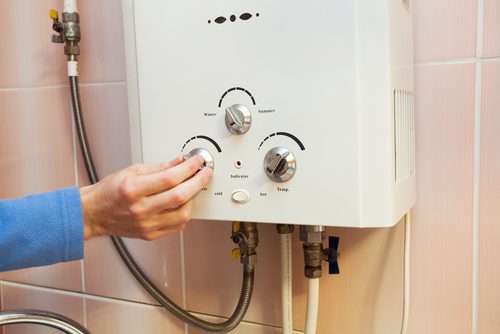What are your thoughts with regards to Water Heater Maintenance Tips You Can't Afford to Forget?

Warm water is essential for day-to-day comfort, whether it's for a refreshing shower or cleaning dishes. To ensure your warm water system runs effectively and lasts much longer, regular upkeep is key. This write-up offers practical ideas and understandings on just how to preserve your home's hot water system to prevent disturbances and costly repair services.
Intro
Maintaining your home's hot water system could appear difficult, but with a few basic actions, you can ensure it operates efficiently for several years to come. This guide covers everything from comprehending your warm water system to do it yourself upkeep tips and understanding when to employ professional help.
Significance of Maintaining Your Hot Water System
Routine upkeep not just expands the lifespan of your hot water system however likewise guarantees it operates effectively. Disregarding upkeep can lead to decreased efficiency, greater power costs, and also premature failure of the system.
Signs Your Hot Water System Requirements Maintenance
Understanding when your warm water system requires focus can avoid significant problems. Keep an eye out for indications such as inconsistent water temperature, weird sounds from the heater, or rusty water.
Flushing the Water Heater
Purging your hot water heater gets rid of debris build-up, boosting performance and lengthening its life.
Checking and Replacing Anode Rods
Anode poles protect against deterioration inside the container. Evaluating and replacing them when worn is important.
Complex Problems Needing Expert Help
Examples include significant leakages, electric issues, or if your water heater is continually underperforming.
Regular Specialist Upkeep Advantages
Professional maintenance can consist of complete assessments, tune-ups, and making sure compliance with safety and security requirements.
Examining and Adjusting Temperature Setups
Changing the temperature setups makes certain ideal performance and safety.
DIY Tips for Maintenance
You can perform numerous upkeep jobs on your own to maintain your warm water system in leading problem.
Checking for Leaks
Routinely evaluate pipelines and links for leaks, as these can cause water damages and higher bills.
Understanding Your Warm Water System
Prior to diving into upkeep jobs, it's useful to comprehend the basic elements of your hot water system. Commonly, this consists of the water heater itself, pipelines, anode rods, and temperature level controls.
Month-to-month Maintenance Tasks
Normal regular monthly checks can aid catch small problems prior to they intensify.
Testing Stress Alleviation Valves
Evaluating the stress relief valve guarantees it functions appropriately and prevents excessive stress buildup.
Protecting Pipelines
Protecting warm water pipes lowers heat loss and can conserve energy.
When to Call a Specialist
While DIY maintenance is helpful, some issues need professional competence.
Conclusion
Routine upkeep of your home's hot water system is necessary for performance, longevity, and expense financial savings. By complying with these pointers and knowing when to look for specialist help, you can make sure a reputable supply of warm water without unexpected interruptions.
How to Maintain an Instant Hot Water Heater
Before tinkering with your hot water heater, make sure that it’s not powered on. You also have to turn off the main circuit breaker and shut off the main gas line to prevent accidents. Also turn off the water valves connected to your unit to prevent water from flowing into and out of the appliance. 2. When you’re done, you have to detach the purge valves’ caps. These look like the letter “T†and are situated on either side of the water valves. Doing so will release any pressure that has accumulated inside the valves while at the same time avoid hot water from shooting out and burning your skin. 3. When the purge valves’ caps are removed, you have to connect your hosing lines to the valves. Your unit should have come with three hoses but if it didn’t, you can purchase these things from any hardware or home repair shops. You can also get them from retail stores that sell water heating systems. Read the user’s manual and follow it to complete this task properly. When the hosing lines are connected, open the purge port’s valves. 4. You should never use harsh chemical cleaners or solutions when cleaning your unit. Make use of white vinegar instead. It should be undiluted and you’ll probably use about 2 gallons. 5. Now flush your water heater. This task should probably take about 40 minutes. We can’t give you specific directions for this because the procedure is carried out depending on the type, model and brand of your heater. With that being said, refer to the user’s manual. 6. When you’re done draining the unit, you have to turn off the purge port valves again. Remove the hosing lines that you earlier installed on each of the water valves. Put the valve caps (purge port) back in their respective places and be very careful so as not to damage the rubber discs that are found inside these caps. 7. Now that everything’s back in place, check your user’s manual again to find out how to reactivate your water heating system. 8. Once it is working, turn one of your hot water faucets on just to let air pass through the heater’s water supply pipes. Leave the tap on until water flows smoothly out of it. https://www.orrplumbing.com/blog/2014/september/how-to-maintain-an-instant-hot-water-heater/

We were brought to that report about Tips on Maintaining a Water Heater through a buddy on another web blog. Liked our write-up? Please quickly share it. Help another person find it. We treasure reading our article about Water Heater Maintenance Tips You Can't Afford to Forget.
Additional Information